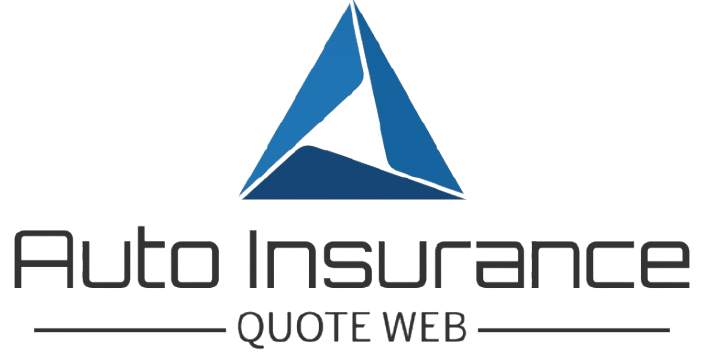The Future of Telematics in Auto Insurance
Imagine a world where your car insurance premiums are based on your actual driving habits rather than statistical averages. This futuristic scenario is becoming increasingly real with the advent of telematics in auto insurance. Telematics, a blend of telecommunications and informatics, involves the use of GPS and onboard diagnostics in vehicles to monitor and record various aspects of driving behavior. This data is then used by insurance companies to assess risk more accurately and offer personalized insurance premiums. The future of telematics in auto insurance promises a revolution in the industry, reshaping how policies are priced, claims are processed, and driving habits are monitored. Let’s delve into this exciting evolution and explore the potential impact it may have on the way we insure our vehicles.
The Evolution of Telematics in Auto Insurance

Telematics in auto insurance is not a new concept. The technology has been around for over a decade, initially introduced as a way to track fleet vehicles and improve operational efficiency. However, its application in personal auto insurance has gained traction in recent years, thanks to advancements in data analytics and the widespread use of smartphones. Today, many insurance companies offer usage-based insurance (UBI) programs that leverage telematics to reward safe driving behavior with lower premiums. These programs typically collect data on factors such as mileage, speed, acceleration, braking, and even the time of day a vehicle is driven.
By using telematics data, insurers can assess risk more accurately and tailor premiums to individual drivers. This shift from traditional rating factors like age, gender, and credit score to real-time driving data represents a significant paradigm shift in the auto insurance industry. Insurers are now able to incentivize safer driving habits, ultimately leading to reduced accidents and claims payouts. As technology continues to evolve, the future of telematics in auto insurance holds even more promising possibilities.
Data-Driven Personalization in Insurance

One of the key advantages of telematics in auto insurance is the ability to personalize policies based on individual driving behavior. Traditional insurance models rely on statistical averages and historical data to set premiums, often resulting in higher costs for safe drivers who fall into high-risk categories. With telematics, insurers can now offer usage-based insurance policies that accurately reflect a driver’s risk profile. Safe drivers who avoid speeding, harsh braking, and risky maneuvers can enjoy lower premiums, while those with riskier driving habits may face higher rates.
This data-driven personalization not only benefits consumers by rewarding safe driving but also helps insurers mitigate risk and reduce claims costs. By encouraging safer behavior through incentives like discounts and rewards, telematics programs promote a more proactive approach to risk management. This shift from reactive to proactive risk assessment has the potential to transform the insurance industry, making it more customer-centric and dynamic.
The Impact of Telematics on Claims Processing

Telematics not only revolutionizes how insurance policies are priced but also how claims are processed. In the event of an accident, telematics data can provide valuable insights into the circumstances leading up to the incident. By analyzing factors such as vehicle speed, direction, and impact force, insurers can reconstruct the events of the crash more accurately and determine liability more efficiently. This data-driven approach to claims processing can help expedite the settlement process and reduce fraud by verifying the accuracy of reported incidents.
Moreover, telematics can facilitate a more seamless claims experience for policyholders by enabling quick and automated claims reporting. In-vehicle sensors and connected devices can detect collisions and notify the insurer immediately, streamlining the claims process and minimizing delays. This real-time data exchange between vehicles and insurers not only enhances customer satisfaction but also improves the overall efficiency of claims management.
The Future Implications of Telematics in Auto Insurance

As telematics technology continues to advance, the future implications for auto insurance are vast and transformative. One of the most significant changes we can expect to see is a shift towards fully personalized insurance policies based on real-time driving behavior. Insurers will increasingly rely on telematics data to price policies accurately, predict risk more effectively, and offer customized coverage options to drivers.
Furthermore, the integration of telematics with emerging technologies like autonomous vehicles and connected car systems will open up new possibilities for insurers. With the rise of self-driving cars and smart transportation networks, telematics data can provide valuable insights into vehicle performance, traffic patterns, and road conditions. This data can be leveraged by insurers to develop innovative products and services that cater to the evolving needs of drivers in a connected world.
Challenges and Controversies in Telematics
While the future of telematics in auto insurance holds immense promise, it also presents challenges and controversies that need to be addressed. One of the primary concerns is data privacy and security. Collecting and storing sensitive driving data raises questions about who has access to this information, how it is used, and how it is protected from unauthorized access. Insurers must ensure robust data security measures and transparent data practices to build trust with policyholders and comply with regulations.
Another challenge is the potential for discrimination based on driving behavior. Critics argue that telematics programs could lead to unfair pricing practices, penalizing drivers for factors beyond their control or invading their privacy. Insurers must strike a balance between using telematics data to promote safe driving and avoiding discriminatory practices that could alienate customers. Clear communication, consumer education, and regulatory oversight are essential to address these concerns and build a sustainable telematics ecosystem.
Expert Opinions on the Future of Telematics
To gain further insights into the future of telematics in auto insurance, we reached out to industry experts for their perspectives on this evolving trend. According to Sarah Johnson, a leading data analyst in the insurance sector, “Telematics has the potential to revolutionize how we assess risk and price policies. By leveraging real-time data on driving behavior, insurers can offer more personalized coverage options that align with individual needs and preferences.” Expert opinions like Johnson’s highlight the transformative impact that telematics is poised to have on the insurance industry.
Common Misconceptions About Telematics
Despite its potential benefits, telematics technology is often surrounded by myths and misconceptions. One common misconception is that telematics is only for young or high-risk drivers. In reality, telematics programs are designed for drivers of all ages and experience levels, offering benefits to safe drivers looking to save on premiums. Another misconception is that telematics invades privacy by monitoring every aspect of a driver’s behavior. In truth, most telematics programs focus on key driving factors like speed, braking, and mileage, rather than personal habits or locations.
Comparative Analysis: Telematics vs. Traditional Insurance
To better understand the differences between telematics-based insurance and traditional insurance models, let’s conduct a comparative analysis of their key features:
- Personalization: Telematics offers personalized pricing based on driving behavior, while traditional insurance relies on statistical averages.
- Risk Assessment: Telematics uses real-time data to assess risk accurately, whereas traditional insurance relies on historical data.
- Claims Processing: Telematics speeds up claims processing through data-driven insights, while traditional insurance follows a manual claims handling process.
- Customer Engagement: Telematics promotes safe driving habits through incentives, fostering a proactive approach to risk management, while traditional insurance focuses on reactive risk assessment.
FAQs About Telematics in Auto Insurance
Here are some frequently asked questions about telematics in auto insurance:
- How does telematics impact insurance premiums? Telematics can lead to lower premiums for safe drivers and higher premiums for risky drivers based on their driving behavior.
- Is telematics technology expensive to implement? While the initial cost of telematics devices and systems may vary, the long-term benefits in terms of risk reduction and claims savings often outweigh the upfront investment.
- Are telematics programs mandatory for all drivers? Telematics programs are typically optional, allowing drivers to choose whether they want to participate and benefit from personalized insurance options.
To Wrap Things Up
The future of telematics in auto insurance holds immense potential to transform the way we insure our vehicles. By leveraging real-time data on driving behavior, insurers can offer personalized policies, streamline claims processing, and promote safer driving habits. While challenges like data privacy and discrimination need to be addressed, the benefits of telematics technology far outweigh the risks. As we look ahead to a more connected and data-driven future, telematics is poised to revolutionize the insurance industry and create a more dynamic and customer-centric ecosystem.




